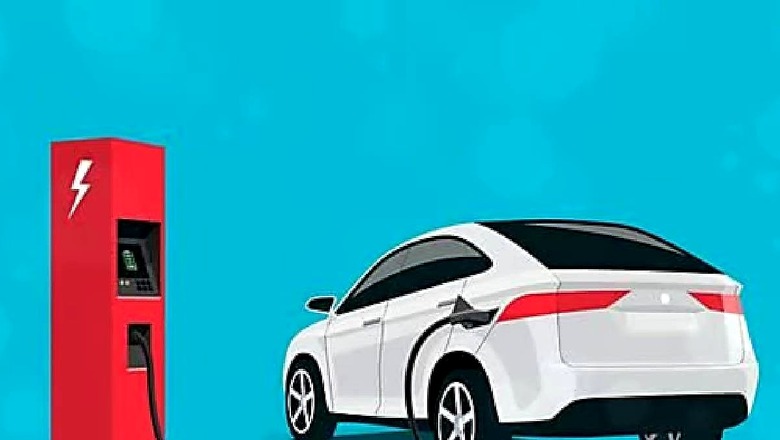
views
The National Capital Region Transport Corporation (NCRTC) has come up with its first Electric Vehicle (EV) charging station operational at Sahibabad RRTS station, located in Ghaziabad.
The Sahibabad RRTS station is an elevated terminal. The station has been created to support trains travelling at a higher speed on the Delhi-Meerut Regional Rapid Transit System.
The trains running on this route are expected to reach up to 180 km per hour. The station has been in operation since October last year and is witnessing many new developments to facilitate travelers. The newly made charging station is understood to have multiple charging units that will help charge various models of electric vehicles.
The brand-new functional EV charging station is constructed on gate number 1 of the Sahibabad RRTS station. As per a report published by PTI, the authorities have taken this step to ensure that there is last-mile connectivity, allowing the passengers to fully charge their four-wheelers within an hour with the help of a fast charging facility.
Apart from that, passengers also get the option of slow charging facilities, which can fully charge their four-wheelers in three hours and their two-wheelers in one and a half hours.
The PTI report also stated that the charging station is currently functional only at Sahibabad RRTS station but will soon be extended to other operational RRTS stations, including Ghaziabad, Guldhar, Duhai, Duhai Depot, Murad Nagar, Modi Nagar South, and Modi Nagar North.
The NCRTC authorities have also given the provision of paying for the electricity consumed per unit through the same mobile application, with the added facility of online payment as well. NCRTC has been putting in efforts to control its ecological footprint since it started with the development of India’s first regional rail project implementation.
In order to promote the national solar mission and encourage the use of clean and sustainable energy sources, a solar policy was adopted by the NCRTC in March 2021.
The main aim of this policy is to support NCRTC’s goal to increase the source of renewable energy by generating about 11 MW peak in-house solar power on the rooftops of stations, depots, and other buildings for non-traction purposes. They plan to achieve this goal in the next five years of their operation.




















Comments
0 comment